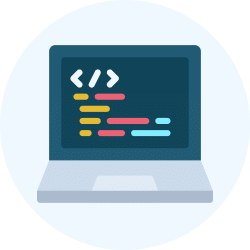Software Development Exam > Software Development Videos > Android Application Development (Mobile App) > Android Application Development Tutorial - 151 - JSONArrays and JSONObjects
Android Application Development Tutorial - 151 - JSONArrays and JSONObjects Video Lecture | Android Application Development (Mobile App) - Software Development
FAQs on Android Application Development Tutorial - 151 - JSONArrays and JSONObjects Video Lecture - Android Application Development (Mobile App) - Software Development
| 1. What is the difference between a JSONArray and a JSONObject in Android application development? |  |
Ans. A JSONArray is a collection of JSON values, represented in square brackets, while a JSONObject is an unordered collection of key-value pairs, represented in curly brackets. In Android application development, JSONArray is typically used to store and manipulate lists of data, whereas JSONObject is used to represent complex objects with multiple attributes.
| 2. How can I parse a JSONArray in an Android application? |  |
Ans. To parse a JSONArray in an Android application, you can use the built-in JSON library provided by Android. First, you need to obtain the JSON string from a source, such as an API response or a local file. Then, you can create a JSONArray object using the string, and iterate over its elements to extract the required data. You can use methods like `getJSONObject()` or `getString()` to access the values within the JSONArray.
| 3. How can I create a JSONObject in an Android application? |  |
Ans. In an Android application, you can create a JSONObject by using the constructor provided by the JSON library. To create a new JSONObject, you can simply call `new JSONObject()` and then add key-value pairs using the `put()` method. For example, `jsonObject.put("key", "value")` adds a key-value pair to the JSONObject. The JSONObject can then be used to represent complex data structures in your application.
| 4. How can I handle JSON parsing errors in Android application development? |  |
Ans. When handling JSON parsing errors in an Android application, you can use try-catch blocks to catch any exceptions that may occur during parsing. The JSONException class is specifically designed to handle errors related to JSON parsing. By wrapping your parsing code in a try block and catching JSONException, you can handle parsing errors gracefully. You can also display appropriate error messages to the user or take appropriate actions based on the type of error encountered.
| 5. Can I convert a JSONObject to a JSONArray in an Android application? |  |
Ans. Yes, it is possible to convert a JSONObject to a JSONArray in an Android application. If you have a JSONObject containing a list of objects, you can extract the values and create a new JSONArray using the extracted data. You can use methods like `keys()` or `get()` to iterate over the JSONObject and extract the values. Then, you can add these values to a new JSONArray using the `put()` method. This allows you to convert a JSONObject with multiple key-value pairs into a JSONArray containing the extracted values.
Related Searches















